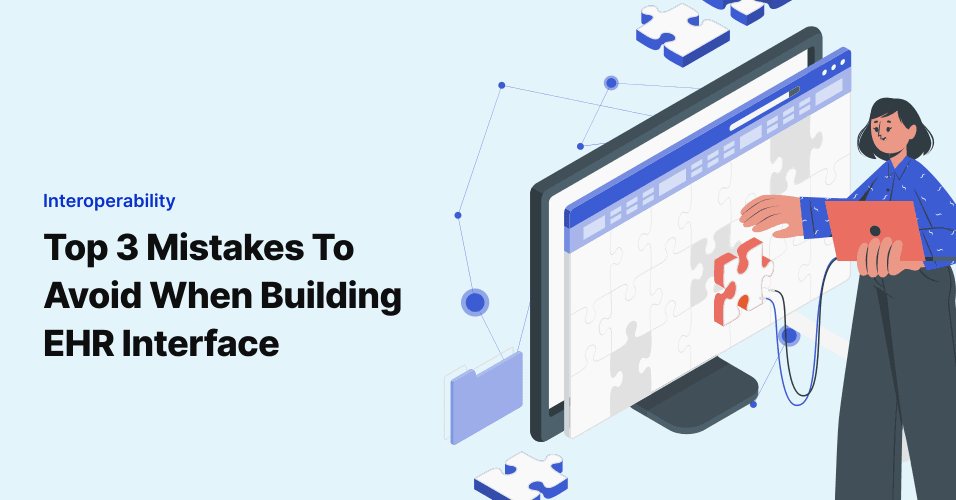
Exploring Muspell Archive’s Dual Data Security Layers
Legacy patient health data holds a wealth of information, including crucial historical insights, essential for …

One of the key benefits to hospitals for investing in a robust EHR like Epic is to not only cultivate their own breadth and depth of patient data, but also to set the foundation for augmenting that data set via EHR interfaces. Connecting with community providers and ancillary facilities is a great way to create a comprehensive care record for patients, which inevitably results in improved quality of care, reduced costs and administrative efficiency. However, just bolting to another system won’t yield expected results. It’s vital that large health systems focus on developing well-executed interfaces to Epic to support interoperability long-term, that won’t require constant babysitting or developer (and vendor) involvement.
Here are the top three mistakes to avoid when building your EHR interface:
As they say: garbage in, garbage out. If the quality or reliability of data coming in via an interface isn’t good, it doesn’t matter how promptly you’re getting those messages (and associated documentation). Especially for health systems that have carefully managed the data conversation process when implementing their Epic instance, maintaining expectations around the cleanliness of ePHI is paramount.
If a healthcare entity can’t vouch for, or meet certain requirements around their outbound interface, it’s worth waiting for the right resources and commitment to quality before making that connection happen. This may mean hiring outside developers/contractors who are familiar with less-common data standards or who have dealt with “massaging” data in transit to reduce clutter in the destination system. More isn’t necessarily better when it comes to patient data, especially if it mucks up the eMPI and junks up the point-of-care experience.
We’ve shared earlier how important it is to leverage professional testers for healthcare IT interoperability, and this is an absolute linchpin when it comes to building interfaces to an Epic instance. Not only do you need technical QA to validate payloads of interface messages and keep an eye on the queue for errors, but hospitals should also leverage clinical testers to review the patient data within the care record to ensure fidelity of incoming data and where it resides within Epic.
Getting the information is great, but if it’s not in the right place and normalized to the right format, it can cause more harm than help – ask any busy physician!
So, test, test and test again!
Most hospital administrators we know don’t have the time to constantly chase down vendors and drive the level of responsiveness required to get interfaces up and running, especially if they’re less than turnkey (i.e. an outdated or “home-grown” standard). Bringing in a seasoned Technical Project Manager is a great way to alleviate the internal burden of implementing a new Epic interface while still maintaining quality deliverables with timeline and budget intact. In fact, we’ve often seen that dedicated PMs, focused on the task at hand, can often drive completion of EHR implementation projects more effectively than a resource wearing too many (or ill-fitting) hats.
Not to mention, health IT project management brings an expansive view to hospitals implementing solutions for patient care, allowing stakeholders to get as much bang for their proverbial buck as possible. Experience goes a long way in avoiding pitfalls before they can even manifest, as well as nimbly responding to delays or barriers.
Not to mention, health IT project management brings an expansive view to hospitals implementing solutions for patient care, allowing stakeholders to get as much bang for their proverbial buck as possible. Experience goes a long way in avoiding pitfalls before they can even manifest, as well as nimbly responding to delays or barriers.
Anything worth doing is worth doing right, as they say. Tapping into the most experienced resources isn’t always the cheapest solution on paper, but when considering the lingering costs and absolute frustration of chasing down shoddy technical implementations impacting an EHR, the value is indisputable (and honestly, it’s cheaper in the long-term).
Quality patient care is all the more bolstered when healthy EHR interfaces for health systems are established and maintained.
Join over 3,200 subscribers and keep up-to-date with the latest innovations & best practices in Healthcare IT.

Legacy patient health data holds a wealth of information, including crucial historical insights, essential for …

When it comes to data conversion for health information (PHI), there are many aspects to consider to ensure …

Information blocking was brought into action to ensure the patient’s right to access their health data was …